Unlike some few years back when we had just a few mobile phone manufacturers, we now have a lot of them out there. New manufacturers have stepped into the game and it does not look like it will end there. We will keep having even more than what we have now with time.
It is indeed a very tough competition for all the manufacturers. Previously, we used to have the likes of Samsung, , Huawei and a few others competing for the Flagship market. Other new manufacturers mostly focused on entry level and midrange smartphones.
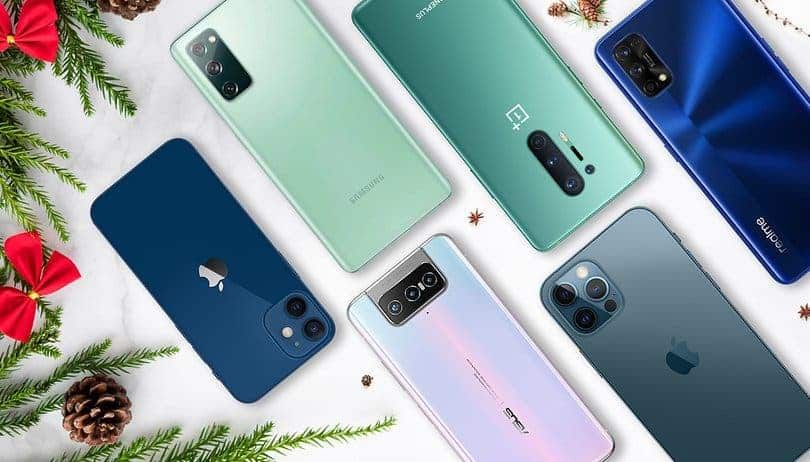
That is not the case any more in these recent years. Now, you will find almost every manufacturer out there, whether big or small competing in all areas of the smartphone market. Being it entry level, midrange or flagship level.
There is a very large market for smartphones in general and every manufacturer is doing everything possible to grab their own share of the cake. As a matter of fact, every manufacturer is trying to get to the top of the ladder. This struggle to the top has brought about so much technogical innovations and advancements to smartphones.
Every manufacturer is trying to catch the attention of consumers with their technologies. Which is a very good thing because, at the end of the day, it is the consumer that benefits from all the techs. This also gives consumers a lot of options to choose from.
Samsung And Apple Dominates The Market
We now have names like Samsung, Apple, Xiaomi, Realme, Redmi, Huawei, Oppo, Vivo, OnePlus, IQOO, Nokia, Sony, Tecno, Infinix etc. All trying to claim the top spot.
However, only few can actually take the top spot. Everybody cannot be the first, definitely there will be number 1, number 2, number 3 in that order. This leaves us with the obvious top 2 smartphone manufacturers, Samsung and Apple.
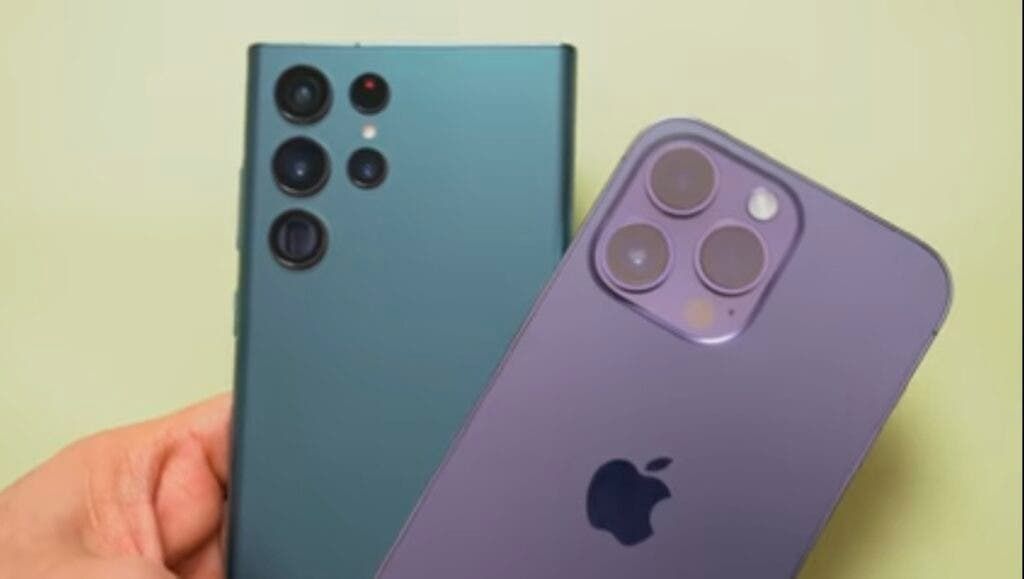
The debate between Samsung and Apple fans looks like an unending one. Sometimes, it looks like the argument between Ronaldo and Messi fans. Everyone thinks their hero is the best and of course, they have good explanations to back their choice.
This is what is happening between Apple fans and Samsung fans now. Apple users say that Samsung is trash while Samsung users also say iPhones are overrated. It will be an almost impossible task to try and convince an iPhone user that Samsung is better. Neither is it possible to convince a Samsung user that iPhone is better.
I have come across these arguments on an uncountable occasions. I have realized that wherever Samsung or iPhone is mentioned, arguments like this is likely to pop up. This is my main reason for coming up with this article.
None of the results in this article came from my personal opinions. We have carefully gathered a lot of results from different comparison videos. Plus our own comparison before writing this article.
Benchmark Score VS Real Life Performance 
You hear a lot of people saying that benchmark scores don't really matter. What really matters is the real life performance of the phone. Well I have made this statement on several occasions too. So I will first talk about the benchmark scores of these two smartphones.
The real life performance test results will also follow afterwards. This way, we can easily confirm whether benchmark scores really translates to the performance of smartphones in real life usage. The winner of each test gets 1 point. So it is either 1 point or nothing. At the end, we will know how many points each phone got. Let's get started...
Geekbench Score For iPhone 14 Pro Max And Samsung S22 Ultra
We will begin with the Geekbench scores for both devices. Geekbench measure the processor and memory performance of a smartphone or computer. And matches it with real life functionalities or usage of a smartphone or computer.
The Samsung Galaxy S22 Ultra got a Geekbench score of 1168 for single core-score. It also got 3508 for multi-core score.
The iPhone 14 Pro Max on the other hand got a Geekbench score of 1879 for single-core score and 4664 points for mult-core score.
So you can clearly see that the iPhone 14 Pro Max totally leads the Samsung S22 Ultra in both single-core score and multi-core score on Geekbench. This leads us to 1 point for the iPhone.
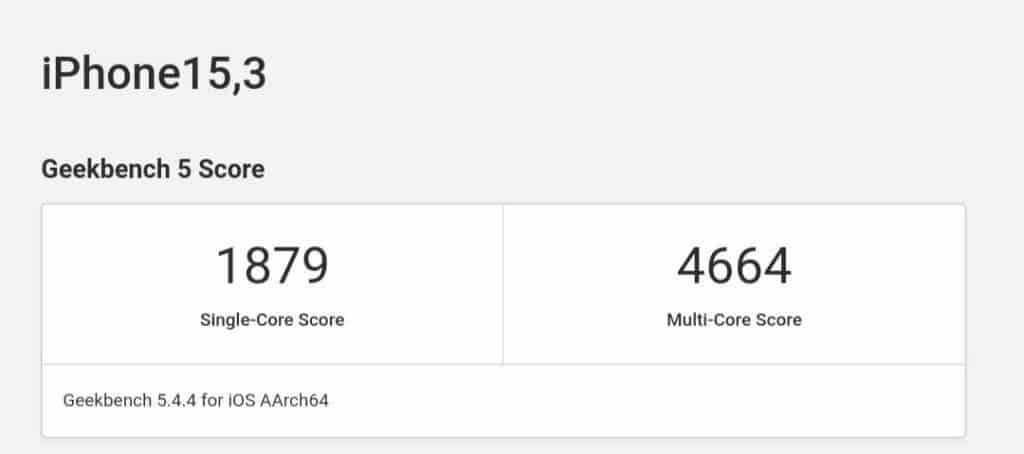
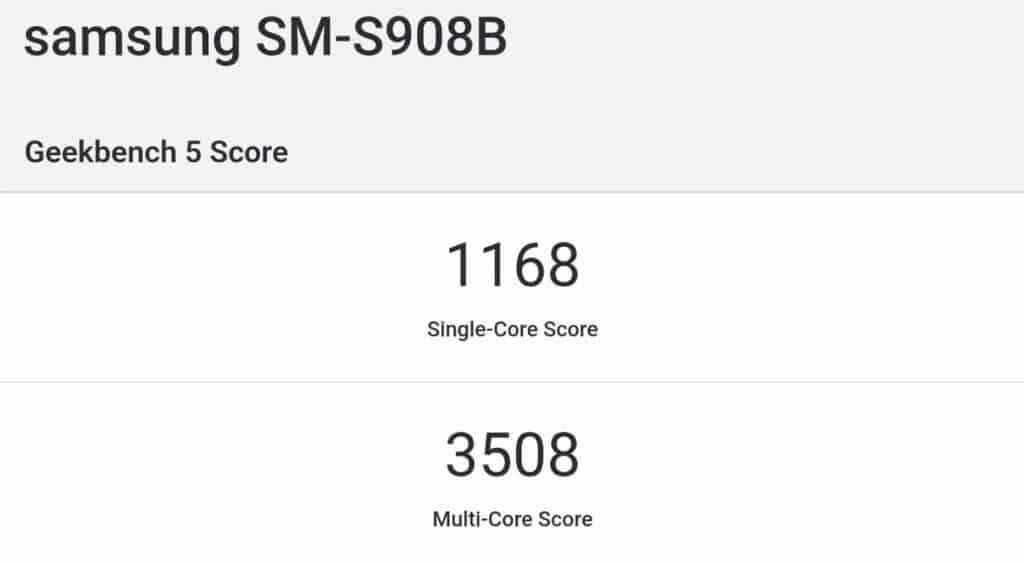
Machine Learning (ML) Benchmark Score For Samsung S22 Ultra And iPhone 14 Pro Max
The ML benchmark scores also come from Geekbench. It measure the machine learning and AI capabilities of your smartphone.
The iPhone 14 Pro Max got an ML benchmark score of 1000 points.
The Samsung Galaxy S22 Ultra also got an ML benchmark score of 429 points.
One(1) point for the iPhone 14 Pro Max over the Samsung S22 ultra.
Antutu Benchmark Score For iPhone 14 Pro Max And Samsung S22 Ultra
On Antutu Benchmark, the iPhone 14 Pro Max got a total score of 972,936 while the Samsung S22 ultra had a total score of 912,577.
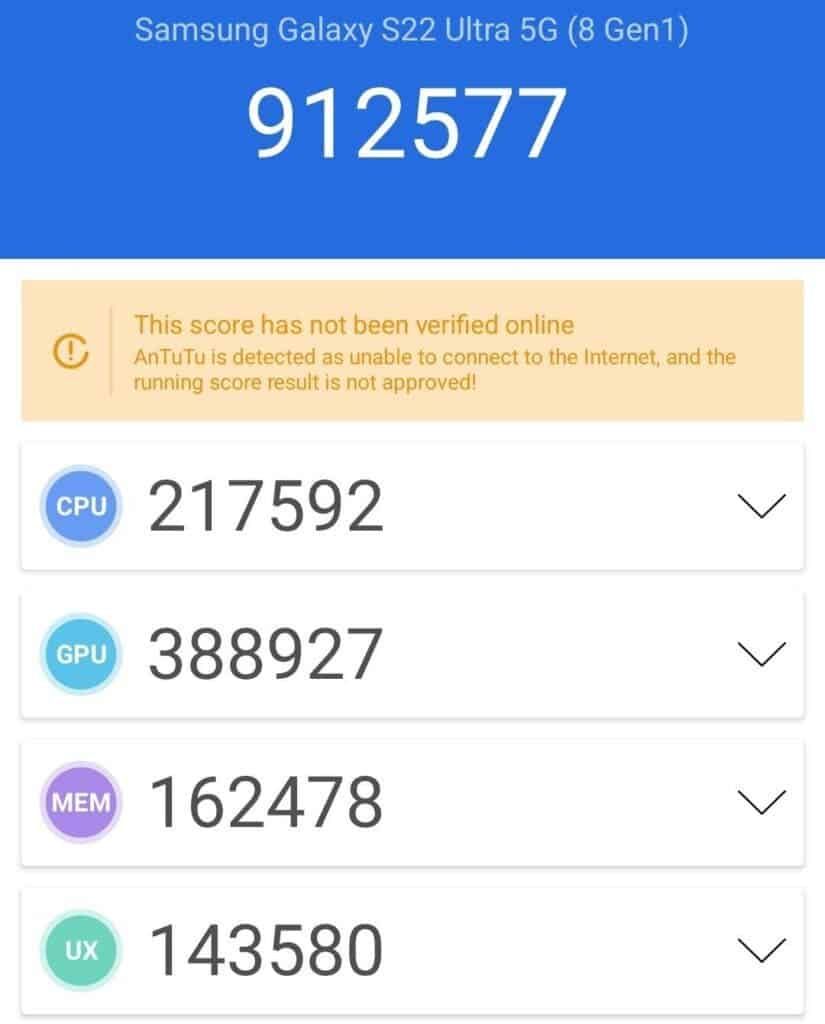

Again, the iPhone 14 Pro Max clearly leads the Samsung S22 Ultra on Antutu Benchmark. Another 1 point for the iPhone.
3DMark Score For The iPhone 14 Pro Max And The Samsung S22 Ultra
3DMark Benchmark measures the gaming performance of a smartphone phone. The iPhone 14 Pro Max got a gaming performance score of 3009 while the Samsung S22 Ultra trailed closely with 2800 points.
The iPhone got the point here too. This brings us to the end of the Benchmark tests. Apple clearly dominated the benchmark scores over Samsung. The iPhone claimed all the 4 points from the benchmark results. But will that be the case if we get into real life test? Let's find out.
Real Life Tests Of The iPhone 14 Pro Max And The Samsung S22 Ultra
In the real life usage test, I will list the results from each test and highlight the winner. The real life usage test begins with the boot time. The time it takes for a smartphone to boot tells how well the processor handles the software right from the beginning. So let's get started.
Boot Time: the iPhone 14 Pro Max finished booting in about 10 seconds while the Samsung Galaxy S22 Ultra took about 13 seconds to boot up. 1 point for the iPhone here.
App Speed Test Between iPhone 14 Pro Max And Samsung S22 Ultra
Camera App: 1 Point for the iPhone 14 Pro Max, 0 for the Samsung S22 Ultra.
Twitter App: The Twitter app opened first on the Samsung S22 Ultra. So one point for Samsung and 0 for Apple here.
Instagram App: Instagram loads faster on the iPhone. But Instagram camera opens faster on the Samsung. 1 point for the iPhone and 1 for Samsung.
TikTok App: Apple takes the lead again with loading time of Tiktok app. Another one point for Apple.
PubG game also loads faster on the iPhone. One point again for the iPhone and zero for the Samsung.
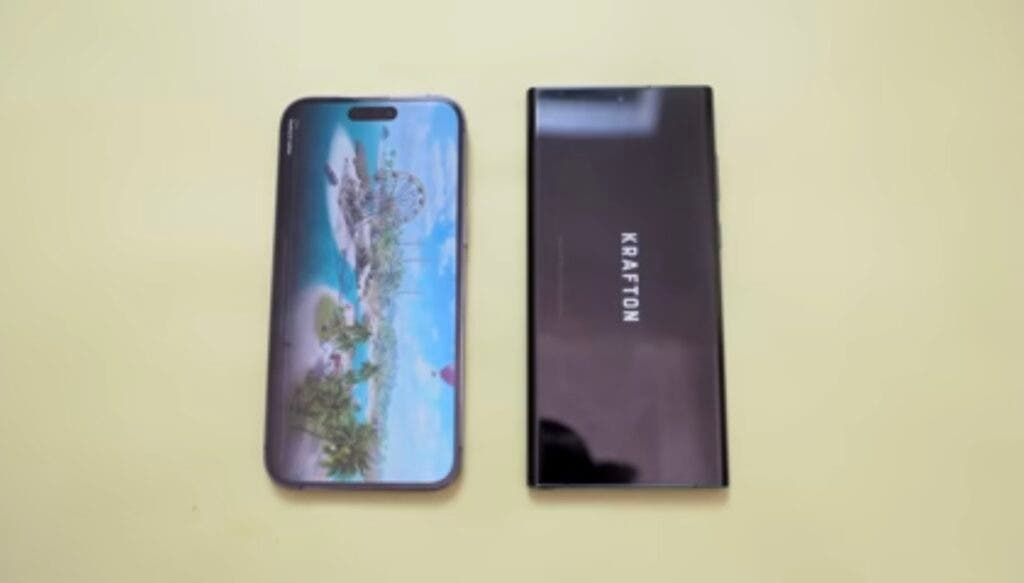
In conclusion, the iPhone 14 Pro Max has a total of 4 points from the app load time while the Samsung S22 Ultra has 2 points.
Rendering Speed On iPhone 14 Pro Max And The Samsung S22 Ultra
In the video rendering we tested about 4 video editing apps but the outcome were all the same. So we had to go with only two apps for the purpose of this article. We decided to go with Capcut video editor and Adobe Lightroom.
Capcut Video Rendering : To ensure fairness, we used the same video in both phones for the video rendering. The iPhone took about 16 seconds to complete the rendering. The Samsung S22 Ultra took about 23 seconds to complete the same process. 1 point for Apple.
Adobe Lightroom: For the Adobe Lightroom, we used a larger video file for the test. The Bionic A16 powered iPhone was able to complete this task within 7 minutes 2 seconds. The Samsung completed within 14 minutes, 2 seconds. Apple claims the point here as well.
This brings us to the end of the performance test. The Samsung S22 Ultra also completed with a battery level of 78%. The iPhone 14 Pro Max had 76% battery left. 1 point for Samsung here. At the end, these are the total points for each smartphone.
IPhone 14 Pro Max : 10 points
Samsung S22 Ultra : 3 Points
Judging from the final score, we can clearly conclude that Benchmark scores really matter when it comes to everyday usage. But can I also conclude that the iPhone 14 Pro Max has totally crashed the Samsung S22 Ultra in real life performance?
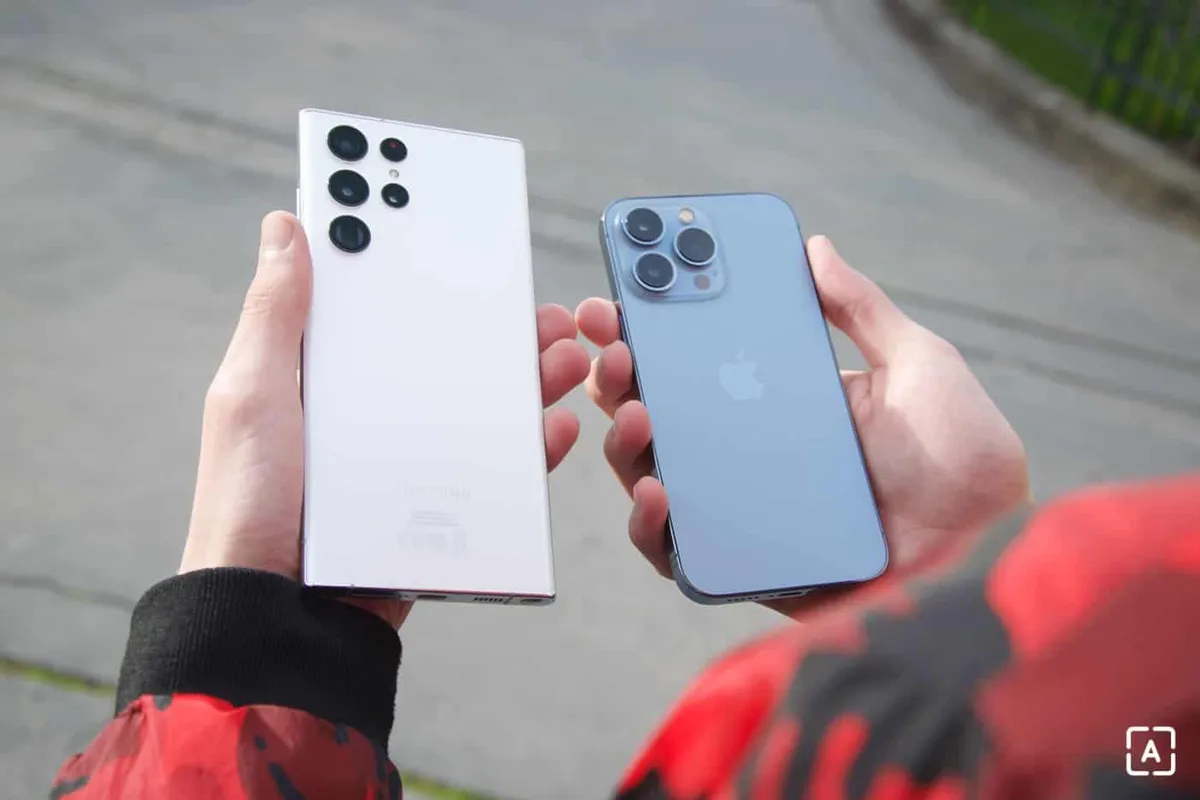





Place comments
0 Comments
You are currently seeing only the comments you are notified about, if you want to see all comments from this post, click the button below.
Show all comments